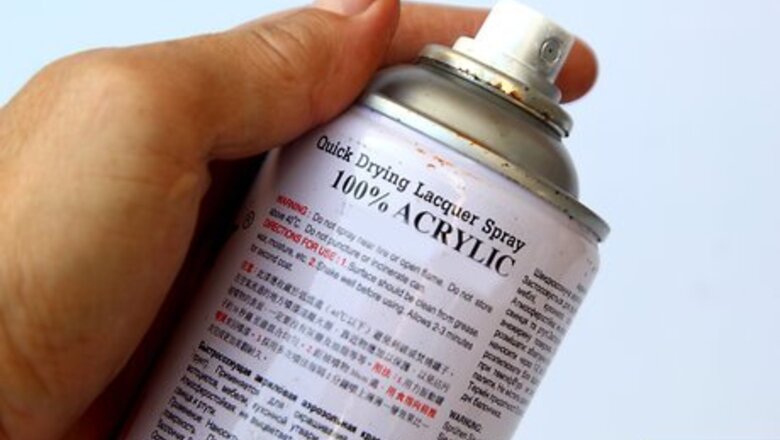
views
Using Mirror-Finish Spray Paint
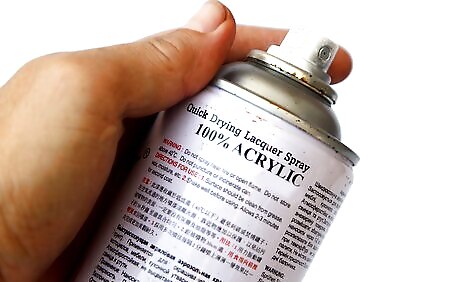
Get a can of mirror-finish spray paint. You can buy this paint from a craft store. It is different from silver spray paint in that it has a reflective, mirror-like finish. Some brands call it "looking glass spray."

Clean your glass item with glass cleaner and a lint-free cloth. A vase or mason jar would work the best, but you can use other items too, like a glass lamp shade. Spray the item with glass cleaner, then wipe it down with a lint-free cloth. Be sure to clean both the inside and outside of the item.
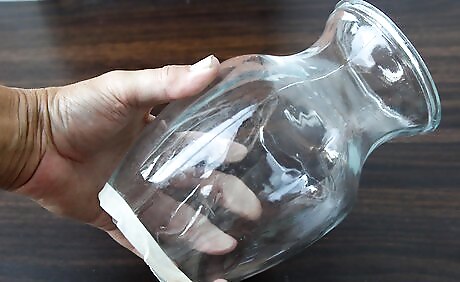
Mask off the side of the item that you won't be painting. If you plan on painting the inside of the item, cover the outside with masking tape. If you will be painting the outside of the item, then stuff the item with newspaper. Painting the inside will give you a nicer finish, but you won't be able to use it as a vase. Painting the outside will leave some texture, but you'll be able to use it as a vase.

Fill a spray bottle with water and white vinegar. Choose a spray bottle that has a mist setting--do not use the kind with a jet stream. Fill the bottle halfway with white vinegar and the rest of the way with water. Close the bottle, then shake it up to mix the solution inside.
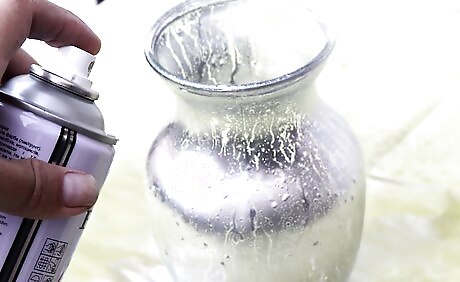
Apply a light coat of mirror-finish paint in a well-ventilated area. Go outside or into a well-ventilated room. Shake the can of spray paint, then hold it 10 to 12 inches (25 to 30 cm) away from the glass item. Apply a light, even coat of spray paint using a sweeping, side-to-side motion. Some people like to spray the glass with the vinegar-water first, let it dry for 1 minute, then apply the paint. The paint will look cloudy when you first apply it, but it will eventually turn more reflective.
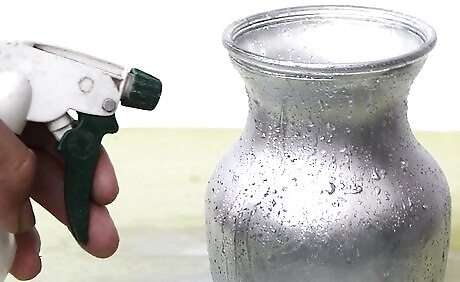
Let the paint dry for 2 minutes, then spray it with the vinegar-water. Apply a light, even coating of your vinegar-water solution to the item. Use enough vinegar-water to bead the glass, but not so much that it starts to drip. You should do this even if you applied the vinegar-water before the paint.
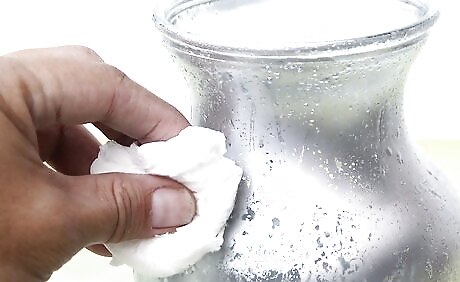
Blot the glass with a wadded up paper towel. Crumple up a paper towel, then press it against the wet glass. The paper will pick up the excess water and paint, and leave behind a crinkled texture. Press lightly to remove less paint, and firmly to remove more paint. Don't rub the paper towel across the glass or you will get streaks. To make the mottling effect more controlled, dampen the paper towel with the vinegar-water first.
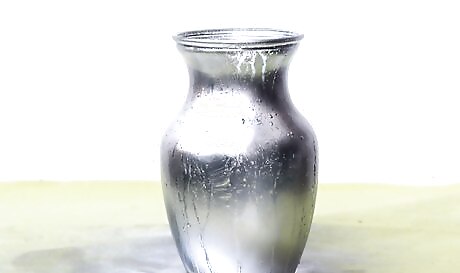
Repeat the process to get the look you want. Mirror-finish paint is very thin, so 1 coat may not be enough to get the coverage you want. If the glass is too translucent for you, simply spray the glass with more mirror-finish paint, mist it with vinegar-water, then blot it. Plan on doing 2 to 3 more coats of paint. For a more distressed look, apply a coat of flat, black paint to the inside of the item, then blot it with a crumpled up paper towel.
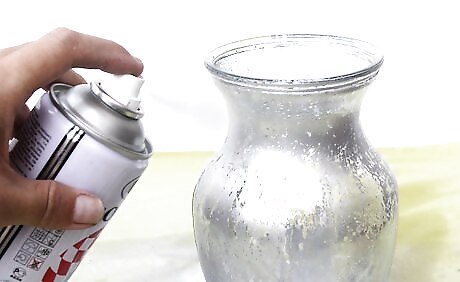
Apply a final coat of paint if you want a smoother finish. Let the paint dry for 10 minutes, then apply a final misting of mirror-finish spray paint. Do not spray it with vinegar-water or blot it. This will help give you a smoother finish.
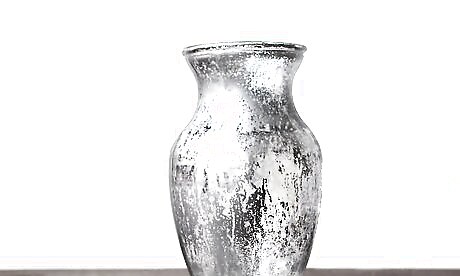
Wait for the paint to dry before using the glass item. Most spray paint takes 15 to 20 minutes to dry to the touch, but it can take longer if you live in a cold or humid area. Once the paint has dried completely, remove any newspaper or masking tape. Display the item as desired. Some paints have a curing time of several days. Check the label to be sure. If you painted the outside of the vase or jar, you can fill it with water and use it as a vase for fresh flowers.
Using Acrylic Craft Paint

Wash and dry a glass vase or jar. Wash the glass with warm, soapy water, then rinse it off. Dry the glass with a towel. To help the paint stick better, it would be a good idea to wipe the glass down with rubbing alcohol too, although that is not absolutely necessary.

Fill a spray bottle with equal parts of water and vinegar. Fill the bottle halfway with water, and the rest of the way with white vinegar. Close the bottle, then shake it to combine the solution. Choose a spray bottle that has a mist option; don't use a bottle that squirts water out like a water gun.
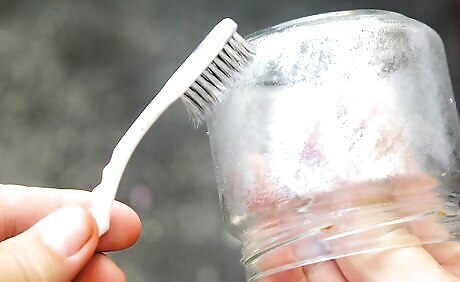
Pat silver acrylic craft paint onto the glass with an old toothbrush. Pour some of your paint onto a disposable tray or palette. Dip the brush into the paint, then tap it on a paper towel to get the excess off. Pounce or tap the brush against the glass to apply a patchy layer of paint. Hold the vase or jar from the inside so that you don't get your fingers dirty.
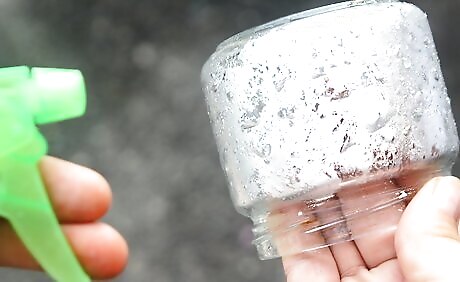
Spray the glass with your vinegar solution before the paint dries. Work quickly, as acrylic paint only takes a few minutes to dry. Hold the vase or jar from the inside, and spray it with your vinegar solution. Apply a light, even coating; you want the solution to bead on the glass without dripping. Don't wait for the paint to set up like you would with spray paint. The acrylic layer is thin, so it will dry fast.
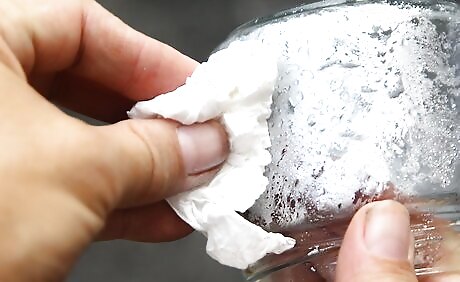
Dab the solution off with a crumpled up paper towel. Take a paper towel and crumple it up into a ball. Pat the glass dry with the paper towel; do not rub the towel across the glass. The paper towel will remove some of the paint and leave behind a crinkled texture.

Repeat the painting, spraying, and dabbing process, if desired. Keep applying layers of paint, spraying it, and dabbing it until you get the coverage you want. With each layer, you'll notice the glass becoming more and more opaque. Allow each layer to dry first before doing the next one, however. Consider using gold paint for your second layer. This will help make it look more realistic and antique.
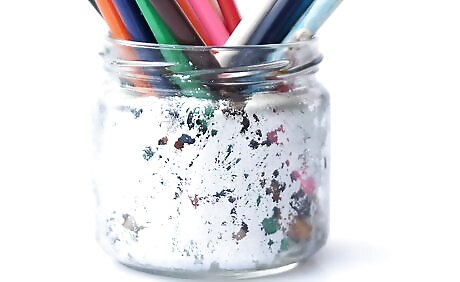
Allow the paint to dry completely. Most acrylic craft paint will be dry to the touch within 15 to 20 minutes. If the paint still feels tacky, you might have gotten enamel or all-purpose craft paint. This means that the paint needs to cure for several days. Check the label on your bottle of paint for complete drying instructions.














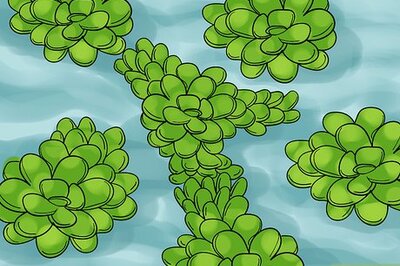





Comments
0 comment